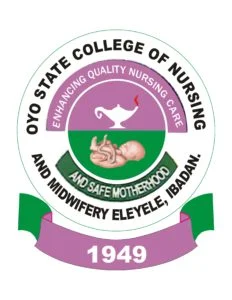Economics Keypoints: Economic Growth and Development; This study material is suitable for students sitting for the following exams: JAMB, WAEC, NECO, GCE, IJMB, and JUPEB.
Study other economics keypoints here
Economics Keypoints: Economic Growth and Development
a. Meaning and Scope
i. Distinguish between economic growth and development:
Economic Growth refers to the increase in a country’s production of goods and services over a specific period, usually measured by an increase in Gross Domestic Product (GDP). It focuses on quantitative aspects, such as the rise in income, output, and consumption. Economic growth indicates the expansion of an economy’s capacity to produce goods and services.
Development, on the other hand, is a broader concept encompassing various dimensions, including economic, social, and institutional progress. It includes qualitative improvements in the standard of living, well-being, and quality of life. Development involves not only economic growth but also advancements in education, healthcare, infrastructure, governance, and overall societal welfare.
Scope: Economic growth primarily concentrates on the increase in the production of goods and services, while development encompasses a wider range of aspects, aiming at holistic improvements in the lives of people within a society.
b. Indicators of Growth and Development
ii. Highlight the indicators of growth and development:
Indicators of Economic Growth include measures like GDP, GNP (Gross National Product), productivity levels, industrial output, employment rates, and per capita income. These indicators help assess the quantitative expansion of an economy.
Indicators of Development encompass a broader set of measures such as the Human Development Index (HDI), which considers factors like life expectancy, education levels, and per capita income. Other indicators include literacy rates, access to healthcare, poverty rates, income distribution, infrastructure development, gender equality, and environmental sustainability. These indicators provide a more comprehensive picture of societal progress beyond just economic metrics.
c. Factors Affecting Growth and Development
iii. Identify the factors affecting growth and development:
Factors Affecting Economic Growth involve elements such as investment, technological advancements, human capital development (education and healthcare), infrastructure development, political stability, favorable government policies, access to credit, and innovation.
Factors Impacting Overall Development are more comprehensive and include economic, social, environmental, and institutional aspects. These factors encompass governance, corruption, income inequality, access to education and healthcare, environmental sustainability, cultural factors, technological progress, and international trade.
d. Problems of Development in Nigeria
iv. Assess the problems of development in Nigeria:
Nigeria faces various challenges hindering its development:
- Infrastructure: Inadequate infrastructure, including power supply, transportation, and communication networks, hampers economic activities.
- Unemployment and Poverty: High unemployment rates and widespread poverty levels contribute to social instability and economic disparities.
- Corruption: Rampant corruption affects governance, misallocates resources, and undermines trust in institutions.
- Political Instability: Frequent political unrest, conflicts, and governance issues hinder long-term development plans.
- Inadequate Social Services: Insufficient access to quality education, healthcare, and basic amenities exacerbates developmental challenges.
- Income Inequality: A wide income gap between different socioeconomic groups contributes to social tensions and reduces overall societal progress.
- Environmental Degradation: Challenges related to environmental sustainability, including deforestation, pollution, and climate change impact the country’s development prospects.
e. Development Planning in Nigeria
v. Examine the role of planning in development:
Development planning in Nigeria involves formulating strategies, policies, and programs to address socio-economic challenges and achieve sustainable growth. This planning aims to:
- Infrastructure Development: Improve infrastructure to support economic activities and enhance connectivity within the country and internationally.
- Poverty Alleviation: Implement programs to reduce poverty through employment generation, social welfare schemes, and income distribution initiatives.
- Education and Healthcare: Enhance access to quality education and healthcare to improve human capital and productivity.
- Governance and Institutional Reforms: Strengthen governance, tackle corruption, and undertake institutional reforms to ensure efficient resource allocation and transparency.
- Environmental Sustainability: Implement measures to promote sustainable development practices, mitigate climate change effects, and preserve natural resources.
- Promotion of Industries: Encourage industrialization, diversify the economy, and attract investments to stimulate economic growth and create job opportunities.
Development planning plays a pivotal role in setting out a roadmap for sustainable and inclusive growth, addressing the challenges faced by Nigeria, and steering the country toward achieving its developmental objectives.
I hope this comprehensive breakdown provides the detailed explanations you were looking for regarding Economic Growth and Development, its components, and Nigeria’s specific context.






